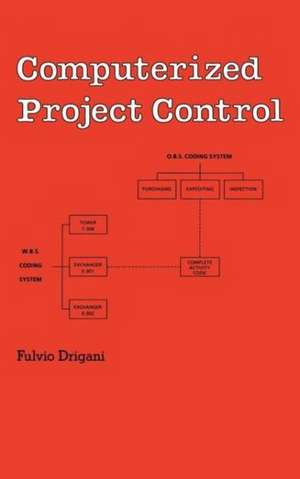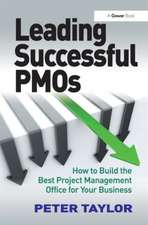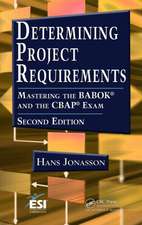Computerized Project Control: Cost Engineering
Autor F. Driganien Limba Engleză Hardback – 21 oct 1988
Preț: 1491.92 lei
Preț vechi: 1819.42 lei
-18% Nou
Puncte Express: 2238
Preț estimativ în valută:
285.51€ • 297.70$ • 237.29£
285.51€ • 297.70$ • 237.29£
Carte tipărită la comandă
Livrare economică 21 martie-04 aprilie
Preluare comenzi: 021 569.72.76
Specificații
ISBN-13: 9780824778675
ISBN-10: 0824778677
Pagini: 240
Dimensiuni: 152 x 229 x 20 mm
Greutate: 0.5 kg
Ediția:1
Editura: CRC Press
Colecția CRC Press
Seria Cost Engineering
ISBN-10: 0824778677
Pagini: 240
Dimensiuni: 152 x 229 x 20 mm
Greutate: 0.5 kg
Ediția:1
Editura: CRC Press
Colecția CRC Press
Seria Cost Engineering
Public țintă
ProfessionalNotă biografică
Fulvio Drigani is Project Controller of the Solar Terrestrial Space Program at the European Space Research and Technology Center (E.S.T.E.C.) in Noordwijk, The Netherlands. Prior to that he worked at Foster Wheeler Italiana in Milan, Italy, where he was responsible for project control system development and organization. Mr. Drigani has published numerous articles on cost engineering and its computer applications as well as lectured on project management and cost engineering. A member of the Italian Association of Cost Engineers, Mr. Drigani is a graduate of the Institute of Quantitative Methods, Universiti Commerciale Luigi Bocconi, in Milan, Italy, where he studied economics.
Cuprins
Preface -- Basic Issues of Project Control Computerization -- I. Introduction -- II. Considerations of Engineering Organization -- A. The Engineering Organization -- B. The Organization Breakdown Structure -- C. The Work Breakdown Structure -- D. The Project Control Coding System -- III. Considerations of the Computerization Approach -- A. Computer Versus Manual -- B. In-house Development or Off-the-shelf -- Software? -- References -- 2 The Project Control Computerized System -- I. Introduction -- A. General Considerations -- B . Software Assumptions -- II. The Planning and Scheduling Subsystem -- A. Critical Path Method -- B. Advanced Network Analysis Models -- C. Project Schedule Generation -- D. Physical Progress Calculation -- E. Spent Manhours Accumulation -- F. Performance Analysis -- G. Backlog Statistical Forecasting -- IiI. The Cost-estimating and Control Subsystem -- A. Cost Estimating -- B. Cost Report Generation -- C. Contract Changes -- D. Profit and Reserves Forecasting -- IV. The Construction Subsystem -- V. Project Control: Statistical Database -- VI. Integration Within the System -- VII. Integration with Other Packages -- A. Introduction -- B. Accounting -- C. Computer-aided Design -- D. Procurement -- E. The Common Database Approach -- VIII. Design Perspectives -- Appendix 1. Vendors -- Appendix 2. CPM Fields -- Appendix 3. Network Plotting -- Appendix 4. The Historical Database -- References -- 3 The Software Tools -- I. Introduction -- II. Identification of the Software Tools -- A. CPM and Risk Analysis Software -- B. Progress and Productivity Evaluation: Work Load and Forecasting Software -- C. Cost Control and Reporting Software -- D. Profitability and Cash Flow Software -- E. Historical Data Collection and -- Statistical Analysis Software -- F. Conclusions -- III. Software Tools: Detailed Features -- A. Database File Definition and Linking -- B. Database File Inquiry and Modification -- C. The Command Language -- D. Report Writing -- E. Standa
Descriere
Highlights advantages, disadvantages, and future trends of computerization to project control activity. Stresses identification of when computerization is needed and explores how to convert. Covers fundamentals of project control theory, software technology, and labor and cost analysis. Includes glo



















